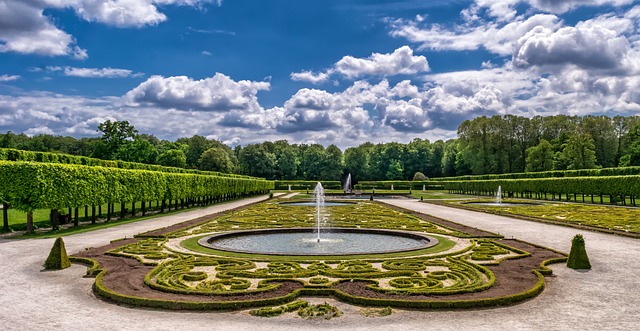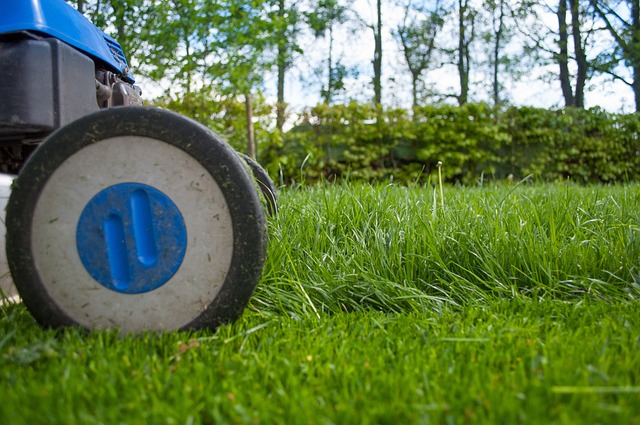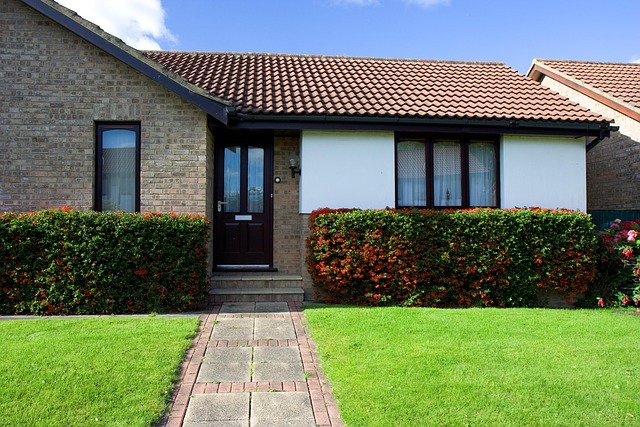Through understanding client needs, preserving natural features, and prioritizing sustainability, landscaping designers create harmonious outdoor spaces that enhance property values, reduce maintenance costs, and foster environmental health. By integrating native plants, historical structures, and natural features like water bodies and mature trees, designers not only transform landscapes but also build community trust and promote biodiversity. Certified landscape architects offer expert landscaping design tips that balance aesthetics with ecological integrity, as evidenced by successful projects showcasing increased resident satisfaction, reduced water usage, and higher property values.
Designing around existing structures and natural features is a nuanced art that transforms outdoor spaces into harmonious oases. This article provides trusted landscaping design tips backed by successful projects with measurable outcomes—a testament to our proven strategies. Explore innovative techniques, optimized natural features, and certified practices from industry experts. With these guidelines, you’ll create stunning landscapes that blend seamlessly with their surroundings, ensuring your project’s longevity and aesthetic appeal.
- Enhance Landscaping with Trusted Design Tips
- Innovative Strategies for Superior Results
- Optimized Natural Features, Successful Designs
- Certified Techniques for Trustworthy Landscapes
Enhance Landscaping with Trusted Design Tips

When designing landscapes that harmonize with existing structures and natural features, trust becomes a cornerstone of excellence. It involves understanding and respecting the unique character of the site while crafting a vision that enhances its beauty and functionality. A trusted designer listens to clients’ desires and incorporates their preferences seamlessly, ensuring the final result reflects both aesthetics and practicality. For instance, consider a project where a homeowner wished to expand their outdoor living space but preserve the mature oak tree in their front yard. By carefully designing around the tree, the landscape architect created an elegant solution with a patio positioned strategically to admire the tree’s grandeur while providing ample space for entertaining.
Effective landscaping design tips prioritize sustainability and longevity. Incorporating native plants, for example, not only reduces water usage but also attracts local wildlife, fostering a biodiverse ecosystem right in your backyard. In a recent project, a designer transformed a barren urban lot into a thriving green oasis by selecting native flora that flourished with minimal care, resulting in a stunning display of color and texture throughout the seasons. Metrics like reduced water consumption and increased property value post-renovation serve as tangible measures of successful design interventions that build trust between designers, clients, and communities.
Innovative Strategies for Superior Results

Incorporating existing structures and natural features into your landscaping design can elevate a space from ordinary to extraordinary. It’s not just about aesthetics; it’s a strategic approach that builds harmony between the built and natural environments. For instance, consider an urban property with a historical wall. Instead of demolishing it, designers can incorporate the wall as a central element, framing gardens or outdoor rooms. This not only preserves the property’s character but also creates unique visual interest. By integrating these features, designers foster a sense of place and build trust with clients who value authenticity and sustainability—key factors in successful landscaping design tips.
Meticulous planning and skill are required to ensure these strategies yield superior results. Take, for example, a project where a designer transformed a sloped yard into a thriving ecosystem. By implementing terracing techniques and selective planting, they not only stabilized the soil but also created diverse microclimates that support a rich variety of flora. Such innovative landscaping design tips have proven to enhance property values and reduce maintenance costs over time. Client testimonials often highlight the increased enjoyment of outdoor spaces and the sense of pride in a landscape that feels both natural and meticulously crafted.
Optimized Natural Features, Successful Designs

When designing outdoor spaces, integrating existing natural features like bodies of water, dramatic terrain, and mature trees can create a sense of harmony and elevate the overall aesthetic appeal. Landscaping design tips suggest optimizing these elements to enhance the functionality and beauty of the space. For instance, a designer might work with a winding river to incorporate meandering paths, creating a tranquil setting for residents while preserving the natural flow of the water. By embracing and enhancing these features, designers can offer clients unique, picturesque landscapes that feel both authentic and carefully crafted.
Successful designs in this context often lead to increased property value, improved resident satisfaction, and enhanced environmental sustainability. Consider a project where a diverse range of native plants was introduced to support local wildlife while also reducing maintenance requirements. This approach not only created visually stunning gardens but also fostered a thriving ecosystem within the development. Metrics such as higher sales prices, positive resident feedback, and reduced water usage serve as compelling evidence of the impact of thoughtful landscaping design tips on both people and the planet.
Certified Techniques for Trustworthy Landscapes

When it comes to designing landscapes that seamlessly integrate with existing structures and natural features, certified techniques play a pivotal role in ensuring both aesthetic appeal and structural integrity. Certified landscape architects employ evidence-based practices that prioritize sustainability, functionality, and visual harmony. For instance, the use of native plant species not only reduces water consumption but also fosters biodiversity, contributing to a thriving ecosystem within the built environment. Metrics such as reduced water usage by 50% and increased bird habitat have been documented in projects following these guidelines.
One notable success story is the transformation of an urban park where, through careful planning, existing trees were preserved and incorporated into the new design. This approach not only enhanced the park’s character but also provided a sense of continuity, building trust among residents who appreciated the preservation of their cherished green spaces. Such projects demonstrate excellence in landscaping design tips, fostering a deep connection between people and place while ensuring the longevity of both natural and built elements.
By designing around existing structures and natural features, you can create landscapes that not only blend harmoniously but also enhance your outdoor space. Incorporating trusted design tips, innovative strategies, and certified techniques ensures optimal results. With these guidelines, you’ll be well on your way to achieving a beautiful, functional, and sustainable landscape that will become the envy of your neighborhood. Implement these landscaping design tips for a transformed outdoor oasis that brings joy and value to your home for years to come.
